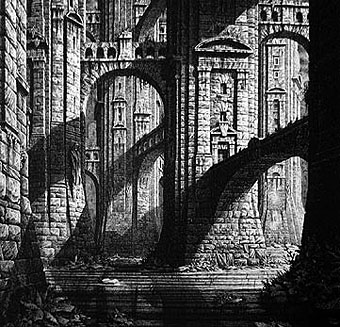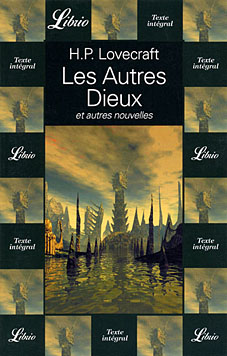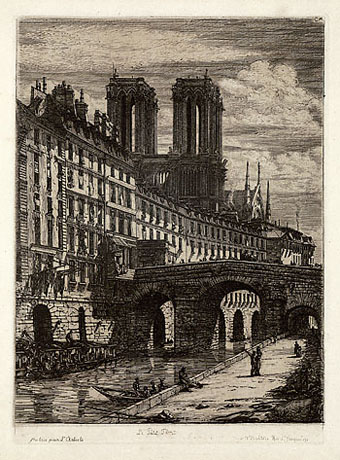
Gérard Trignac produces etchings of a kind I’d most likely be doing myself if I wasn’t otherwise occupied, detailed architectural fantasies that owe a lot to my sainted Piranesi and (I’m guessing, since they’re both French) Charles Méryon. As usual with contemporary artists of this nature one can find the pictures but information about the artist is harder to come by. A web search reveals this:
Gérard Trignac was born in 1955, and initially trained to become an architect—training which is evident in his imagined cityscapes. Each of his prints begins with a detailed sketch, which is then fully developed on the copper plate. Each print can take months to complete. Besides individual prints, Trignac has often turned his talents to series of prints used to illustrate classic texts by authors such as Calvino, Borges, and others. His work is in the collection of numerous museums and public collections in Europe and the United States.

The wonderful (French-only) Egone.net has an artist’s quarter with two Trignac portfolios (scroll to the bottom of the page—and look at some of the other work while you’re there). Work by Gérard’s sister, Colette, is also featured. Other print collections can be found here, here and here.
Elsewhere on { feuilleton }
• The etching and engraving archive


